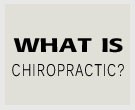Bursitis is the painful inflammation of bursae – small, fluid-filled sacs that lubricate and cushion pressure points between the bones, tendons, and muscles of joints. Bursae help joints move with ease. When they become inflamed during bursitis, movement or pressure is painful. Bursitis often affects areas around the joints in the shoulders, elbows, or hips. Other common sites include the knee, heel, and even the base of the big toe. Bursitis pain usually goes away within a week or so with proper treatment, but recurrent flare-ups are common as well as frustrating.
How does Bursitis develop?
Common causes of bursitis include overuse, stress, or direct trauma to a joint, such as the repeated bumping or prolonged pressure of kneeling. Bursitis may also result from an infection, arthritis, or gout. Bursitis may also be due to the repetitive motion related to certain activities. These forms of bursitis are often named after the profession or trade associated with them, such as weaver’s bottom, which involves inflammation of the bone in the buttocks; housemaid’s knee, which is due to excessive kneeling; and miner’s elbow, which is caused by swinging a pick. Although there are many potential causes of bursitis, the cause of any individual case of bursitis is often unknown. Tendonitis, which involves the irritation or inflammation of tendons, is occasionally misdiagnosed as bursitis.
What are the Symptoms of Bursitis?
Symptoms of bursitis include a dull ache or stiffness in the affected area such as the elbow, hip, knee, shoulder, big toe or other joint. The pain often worsens with movement or pressure, and the area may be swollen and feel warm to the touch. Intermittent redness of the skin in the area of the inflamed bursae may be another symptom. Visible swelling or skin redness is usually absent from bursitis of the hip because the bursae are located beneath some of the body’s bulkiest muscles. In this case, pain is primarily centered over the greater trochanter, a portion of the femur that juts out just below where the bone joins the hip.
Conventional medical treatments may help relieve the symptoms of bursitis, but they do not address the root of the problem. Discover why we believe that natural treatments like Chiropractic and nutritional supplementation are the best way to treat bursitis pain.
Natural vs. Modern Medicine’s Approach to Bursitis
Modern Medicine’s Approach to Bursitis
Since bursitis is an inflammation of the fluid-filled sac, or bursa that lies between a tendon and skin, or between a tendon and bone standard modern medical treatment involves the use of anti-inflammatories such as ibuprofen, and steroids such as cortisone. Temporary rest and immobilization may also be recommended. However, in the end, these treatment approaches do more damage than good. Although cortisone shots and anti-inflammatory drugs have been shown to produce short-term pain benefit, both result in long-term loss of function and pain that is even more chronic by actually inhibiting the healing process of soft tissues and accelerating cartilage degeneration. In addition, long-term use of these drugs can lead to other sources of chronic pain, allergies, and leaky gut syndrome. In other words, none of these treatments properly addresses the root of the problem.
The Natural Medicine Approach to Bursitis
A better approach to treating bursitis is to calm the inflammation with nutritional supplementation.
Bursitis may also involve a tendon injury. If this is the case, Chiropractic adjustments can strengthen and help your body heal the injured tendon as well.
If you are interested in more information about natural treatments or to schedule an appointment, please contact Dr. Laboret at 972-671-5263
Disclaimer: The preceding is to provide information about relief and the benefits that may be derived. It is not intended to claim a cure for any disease or condition. It should not take the place of your doctor’s advice or treatment.






